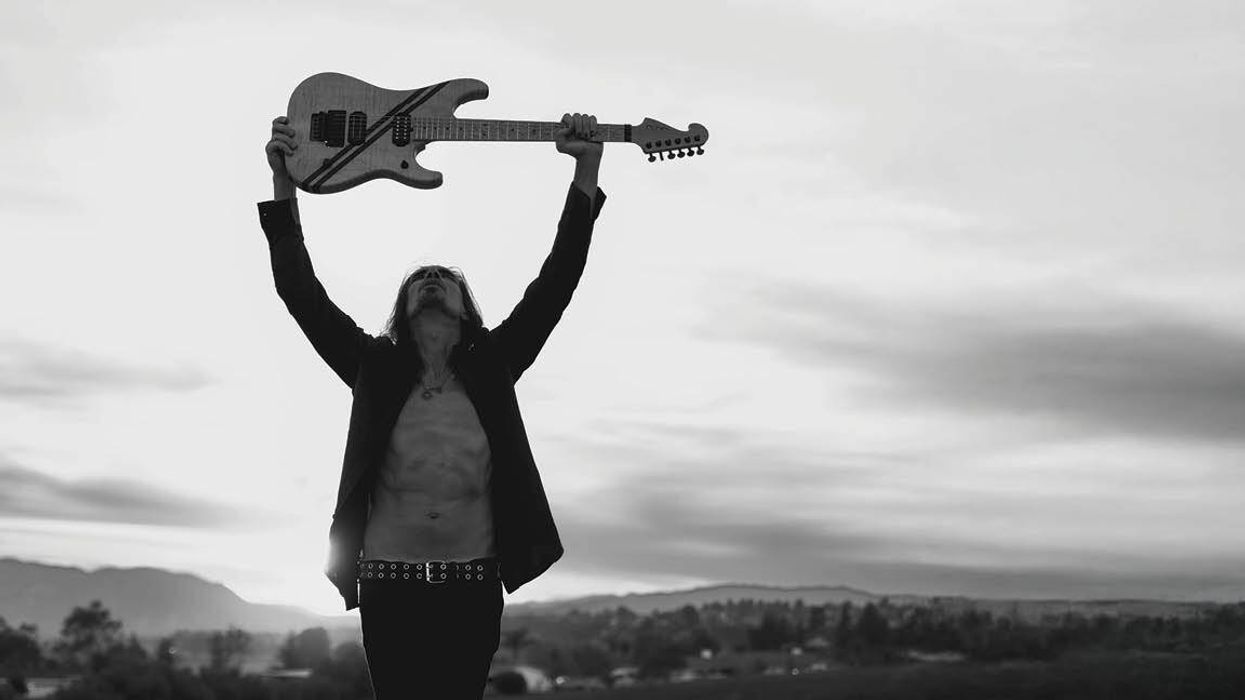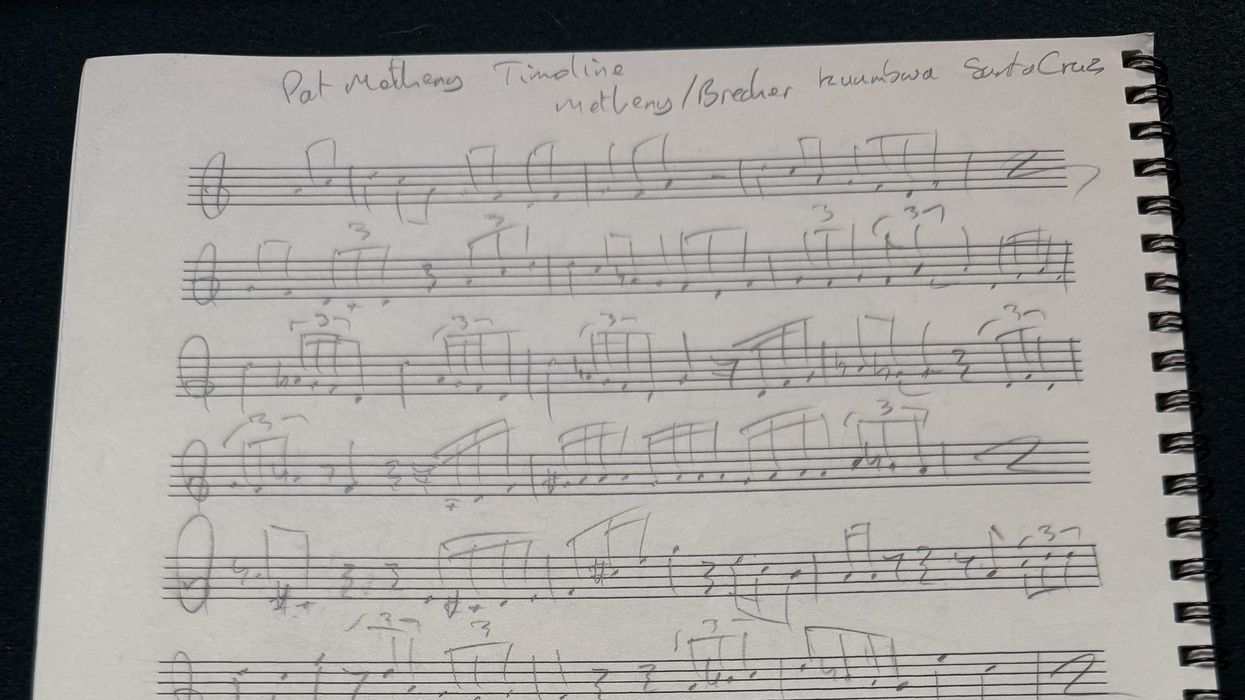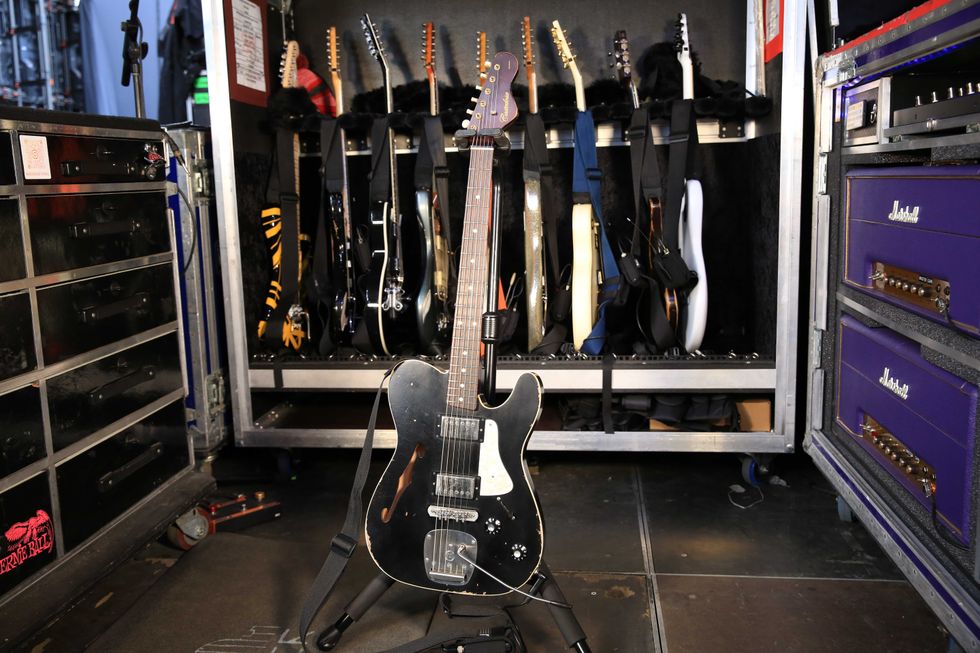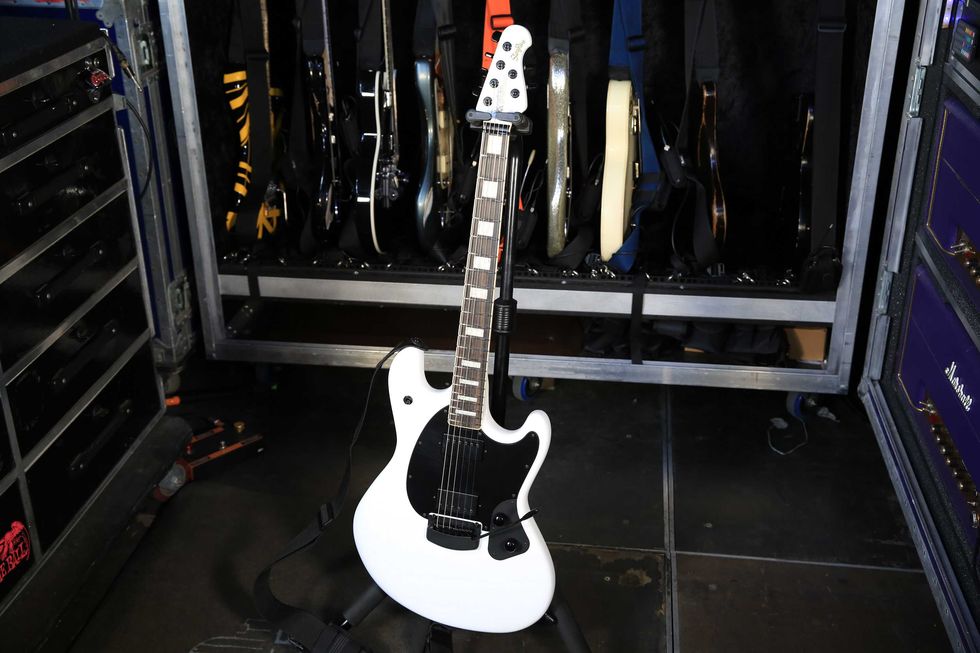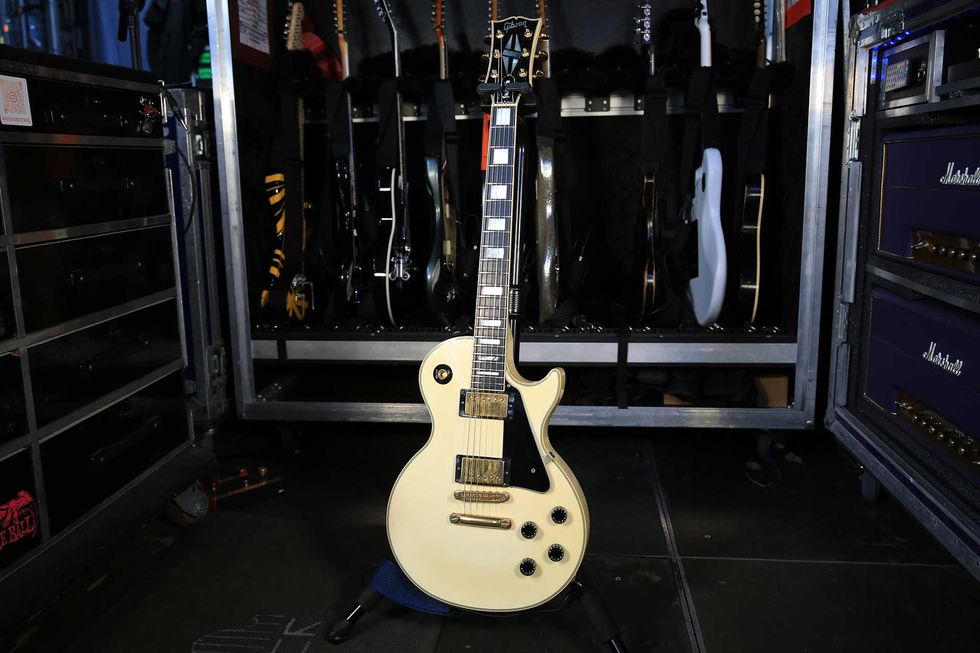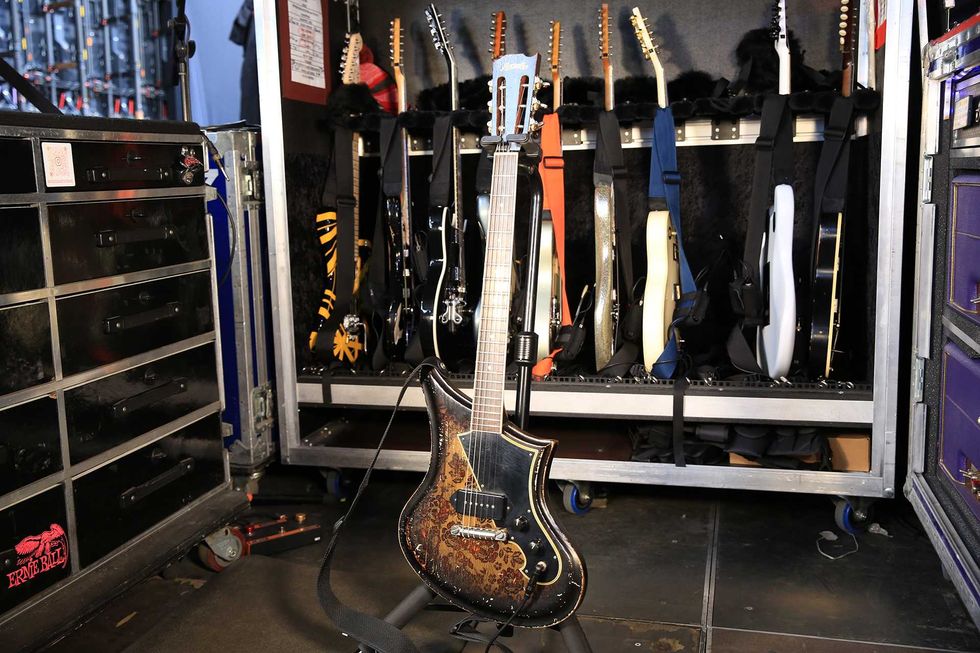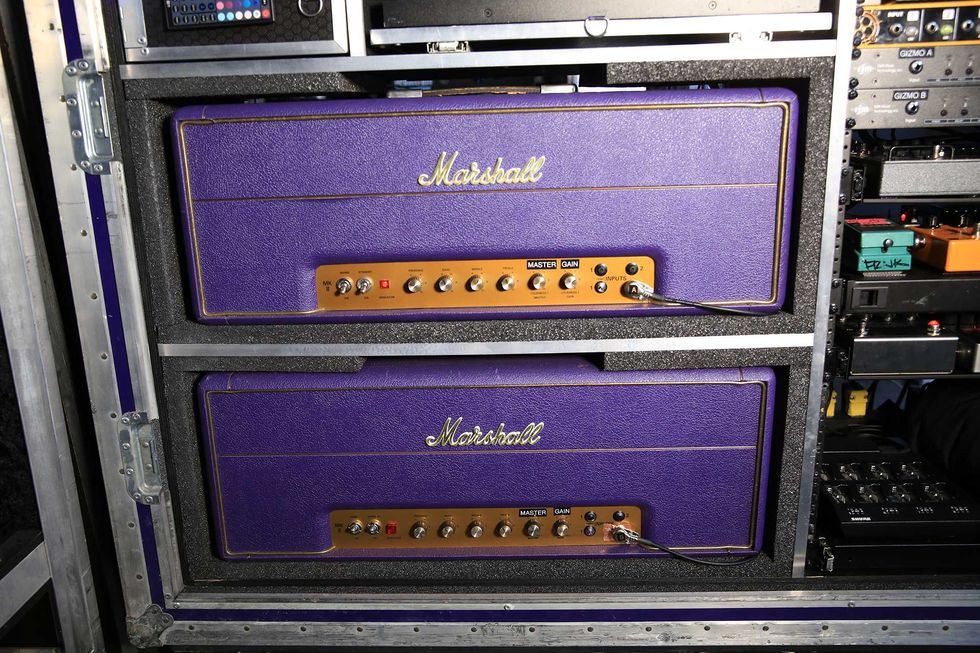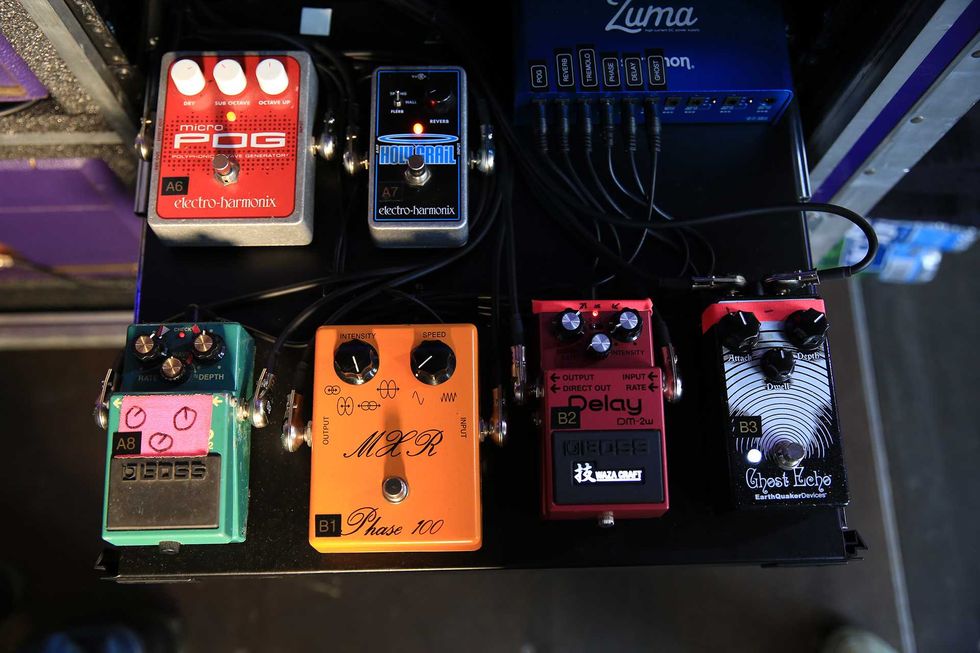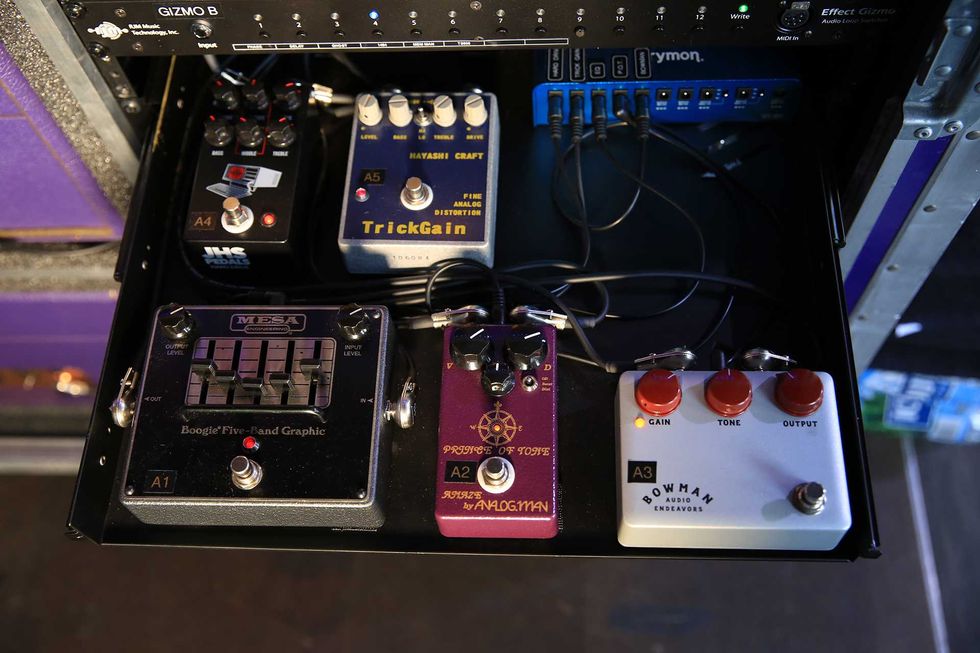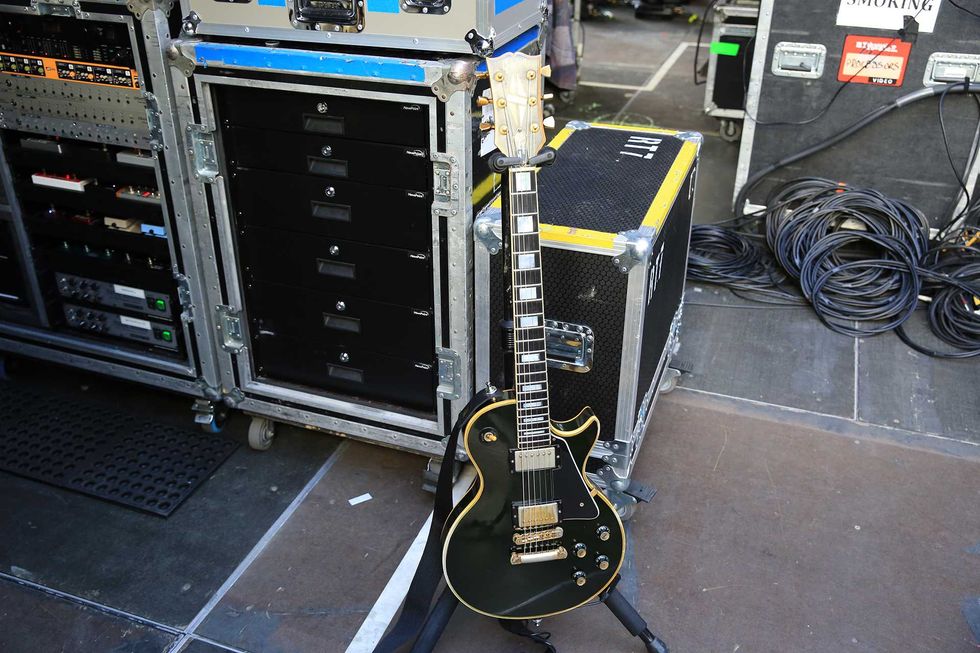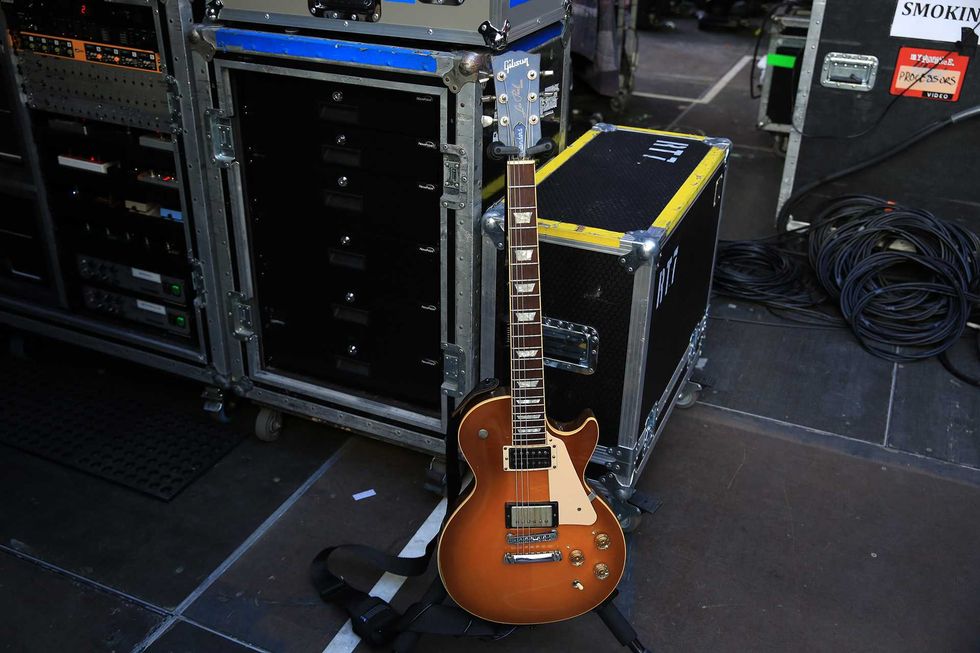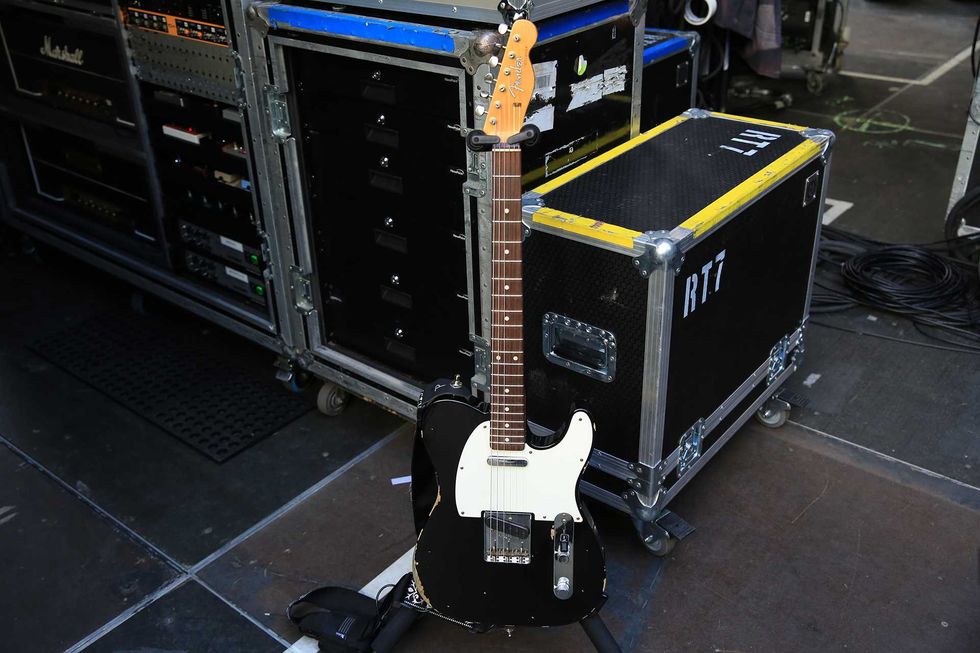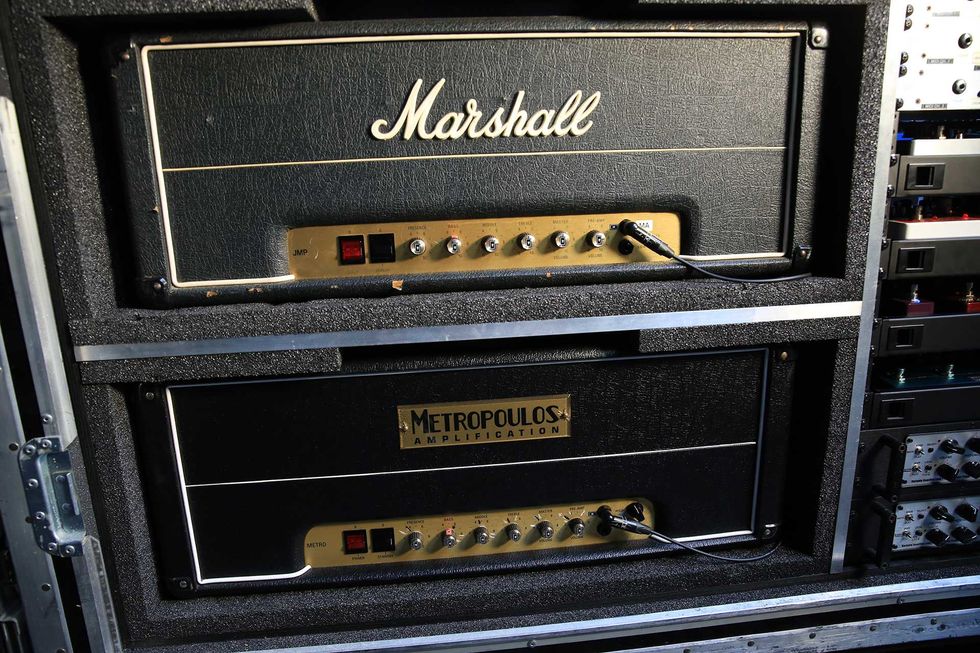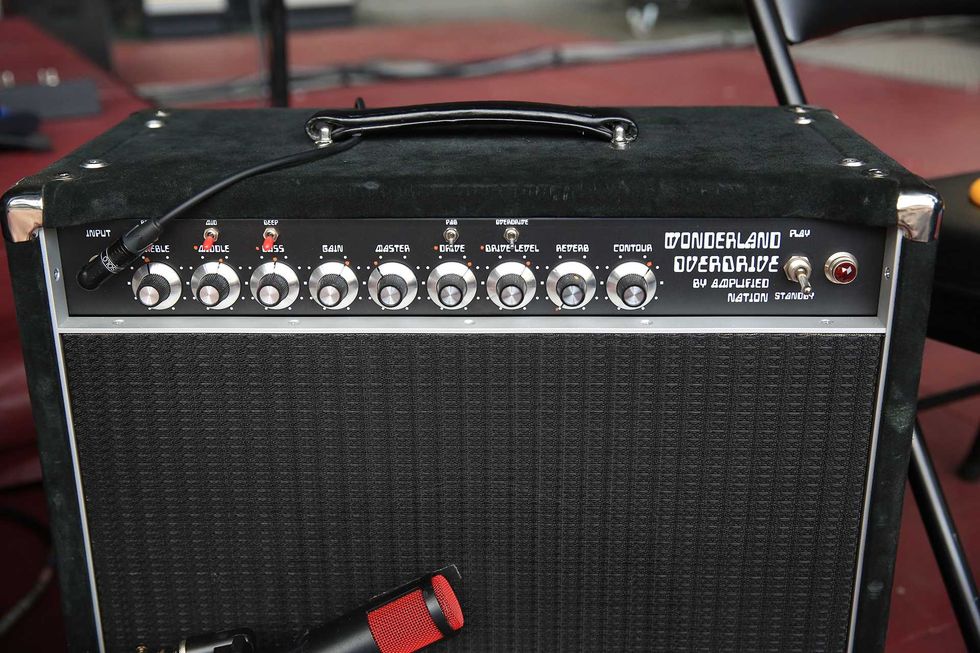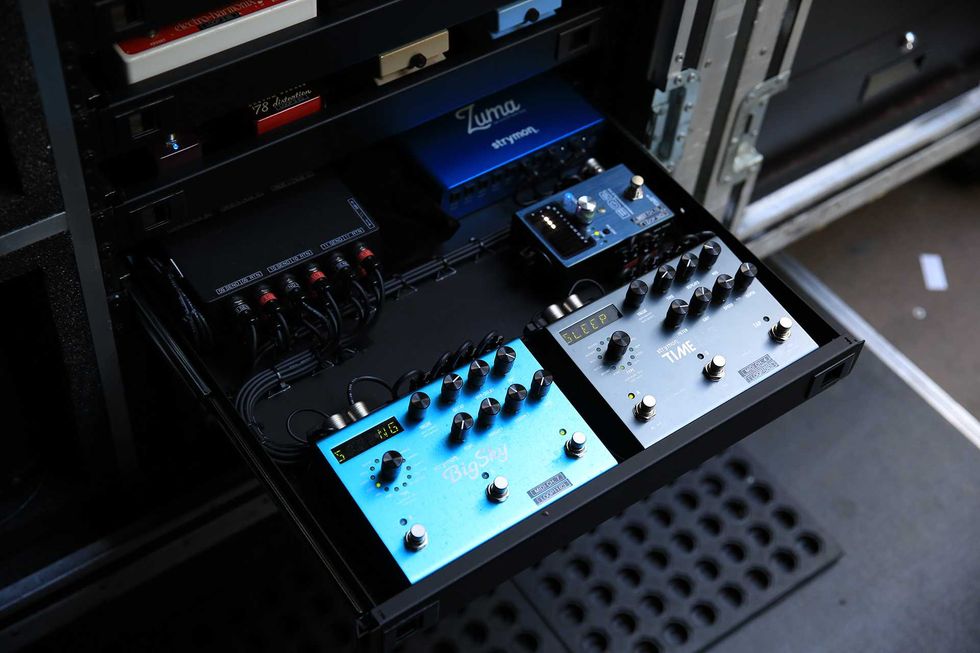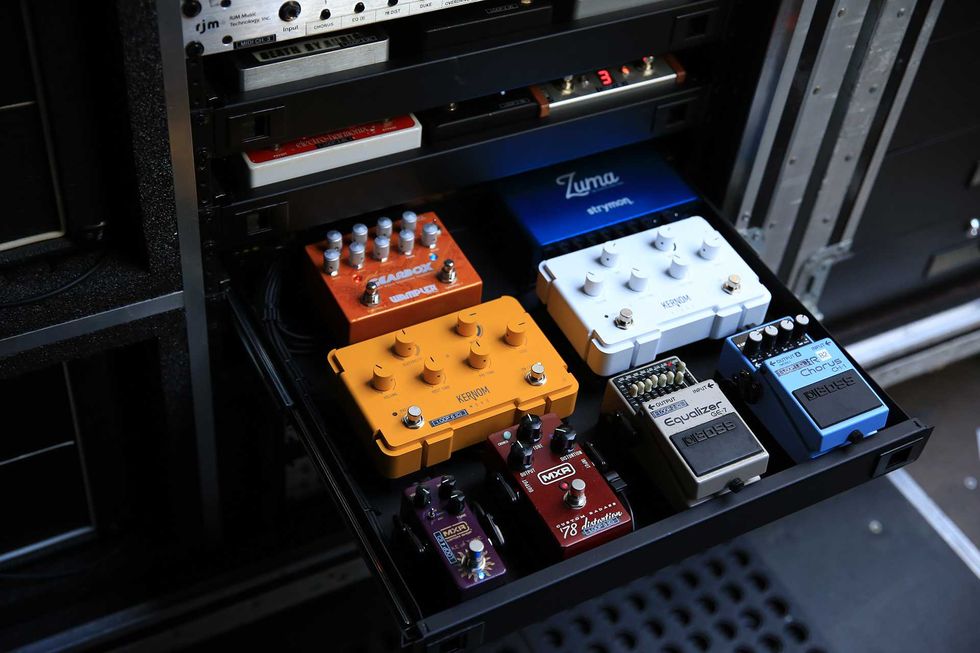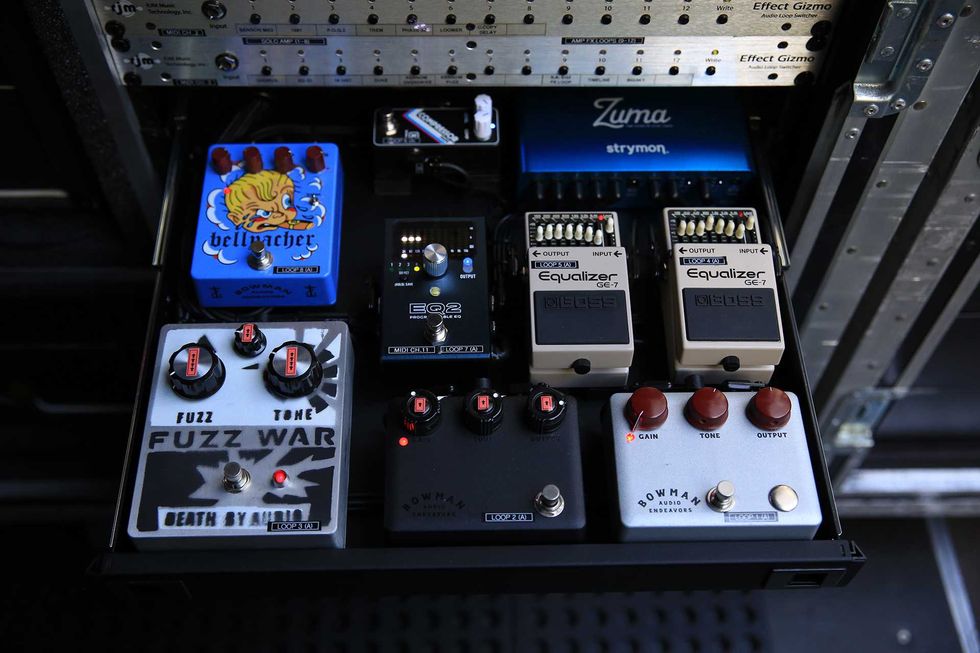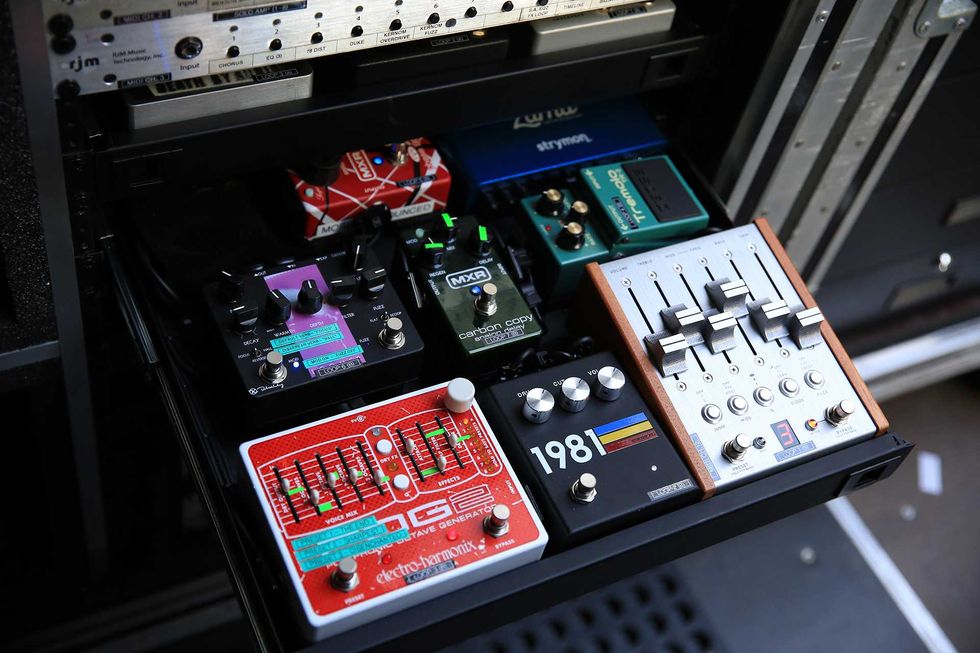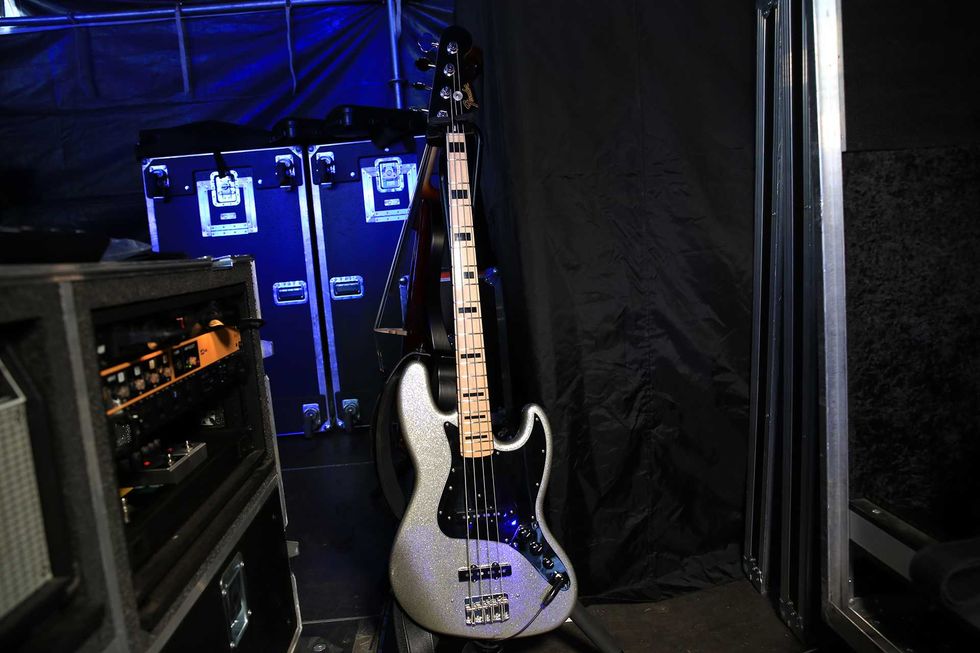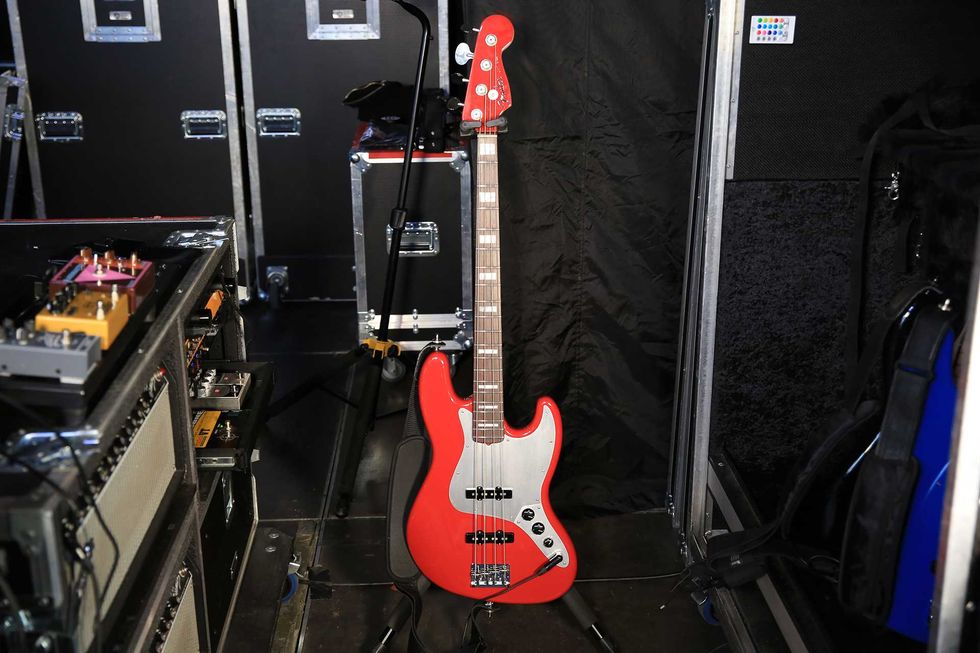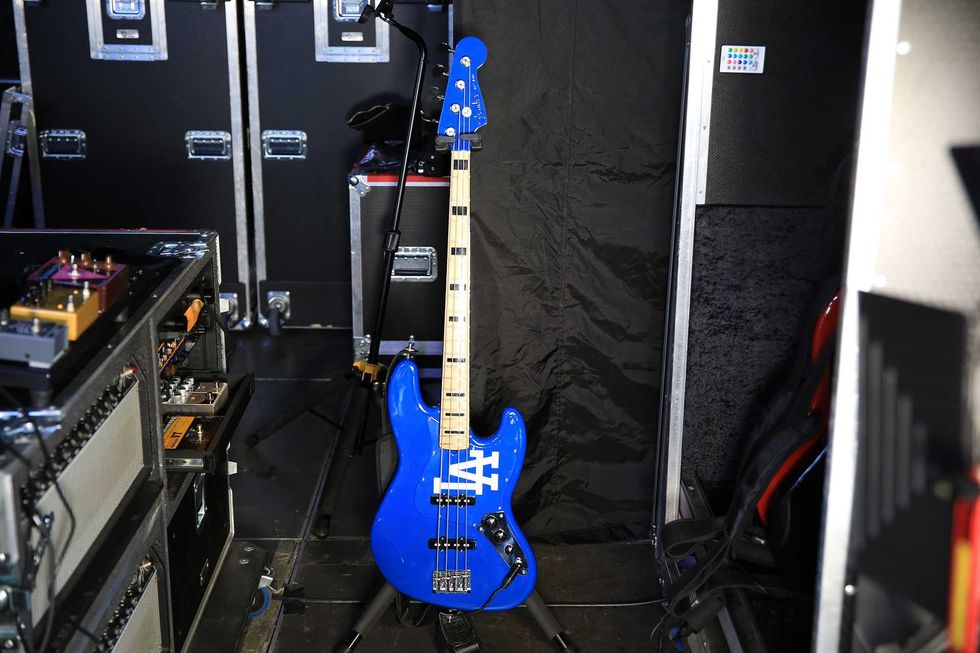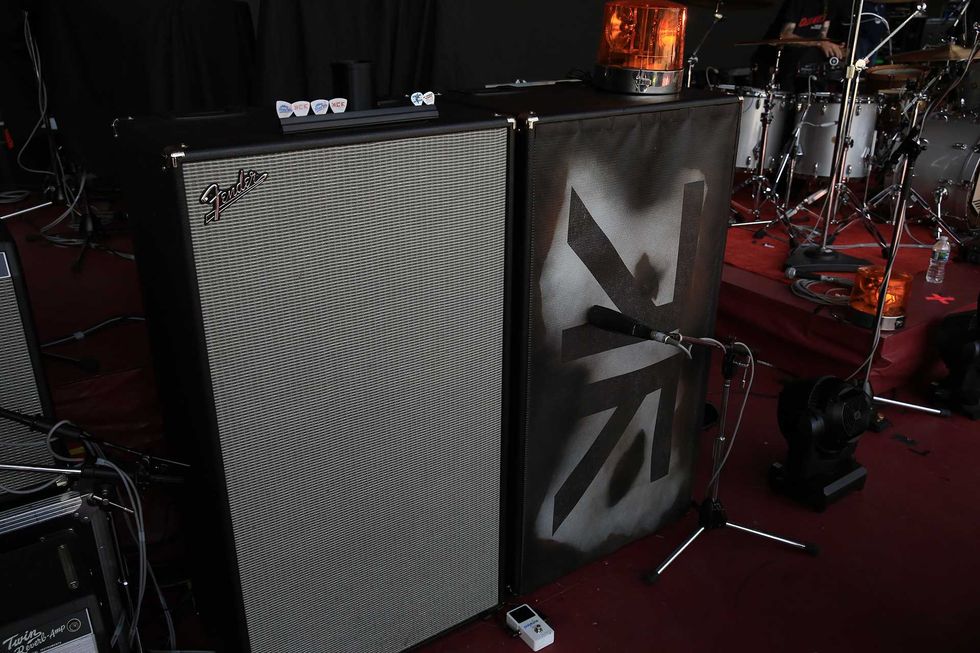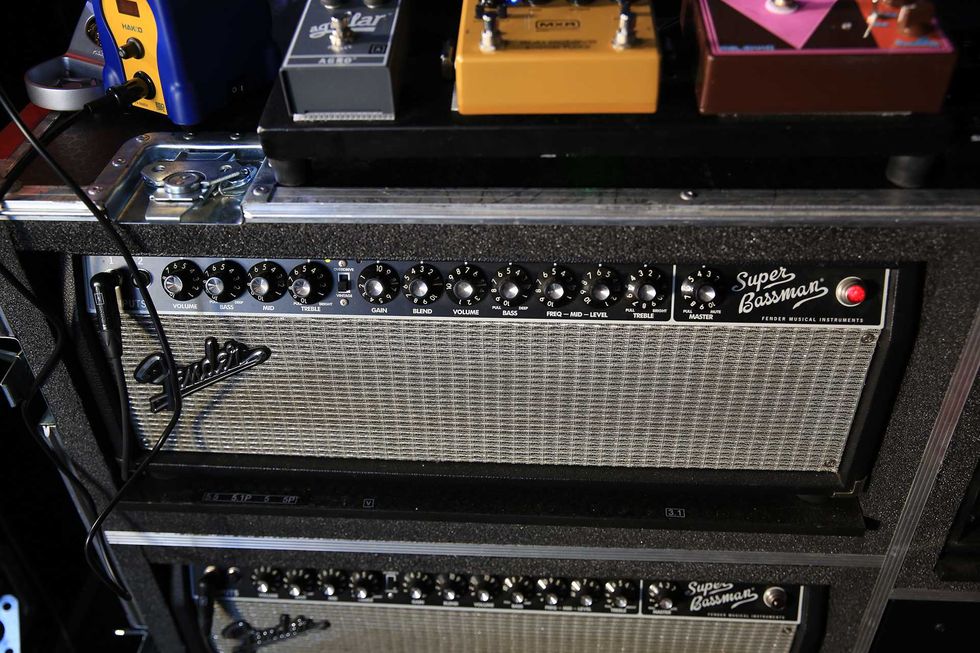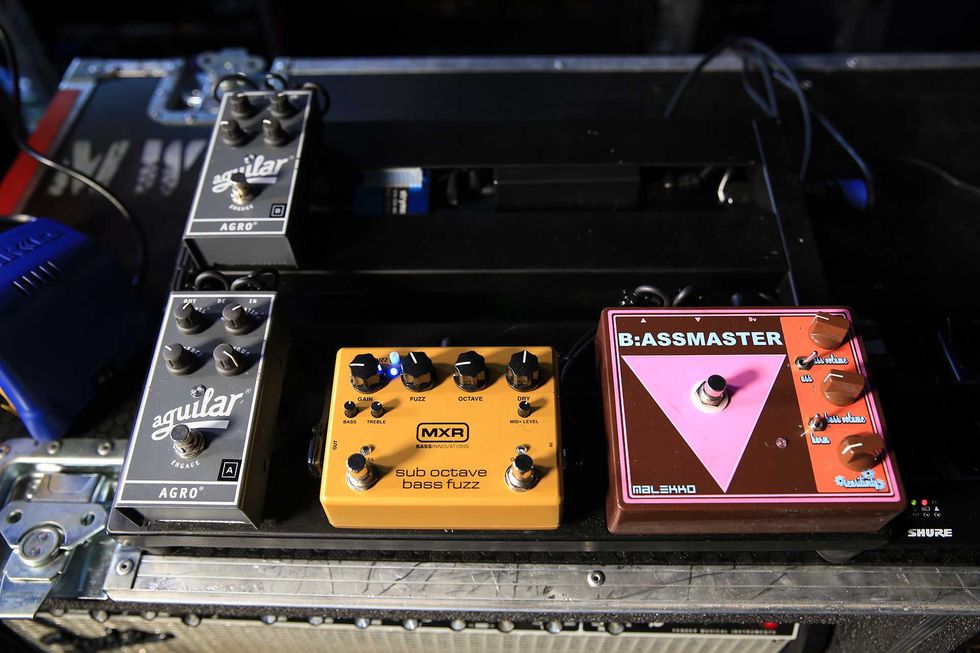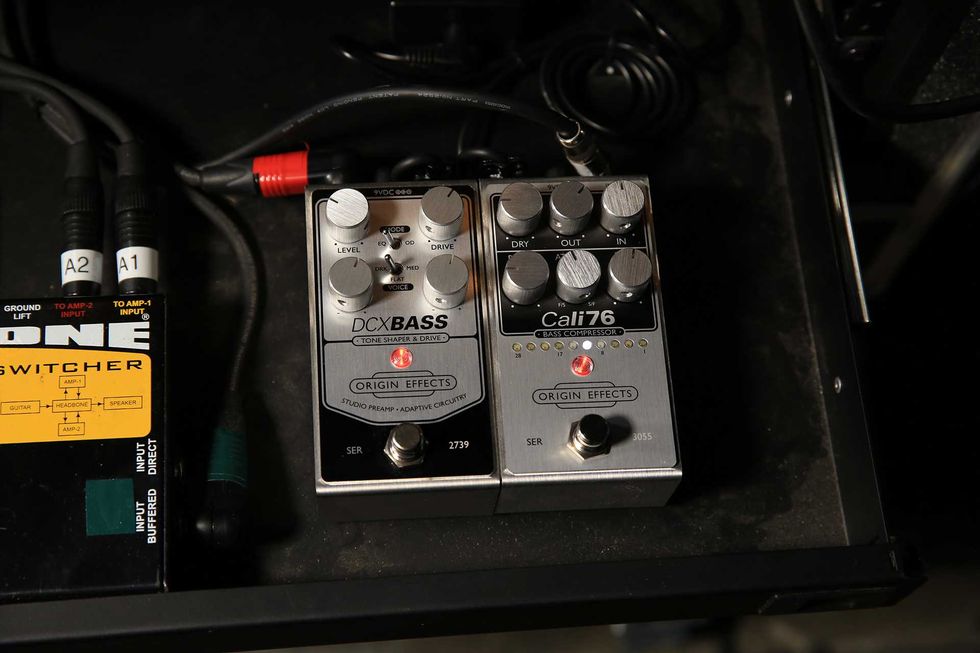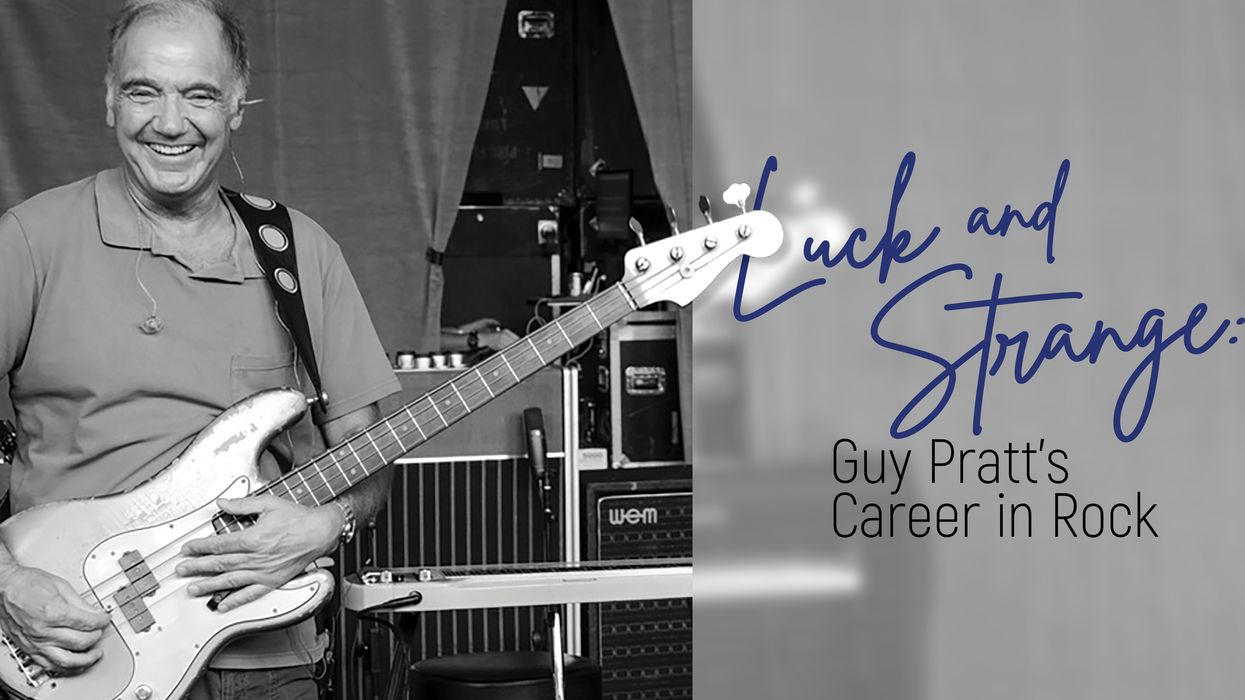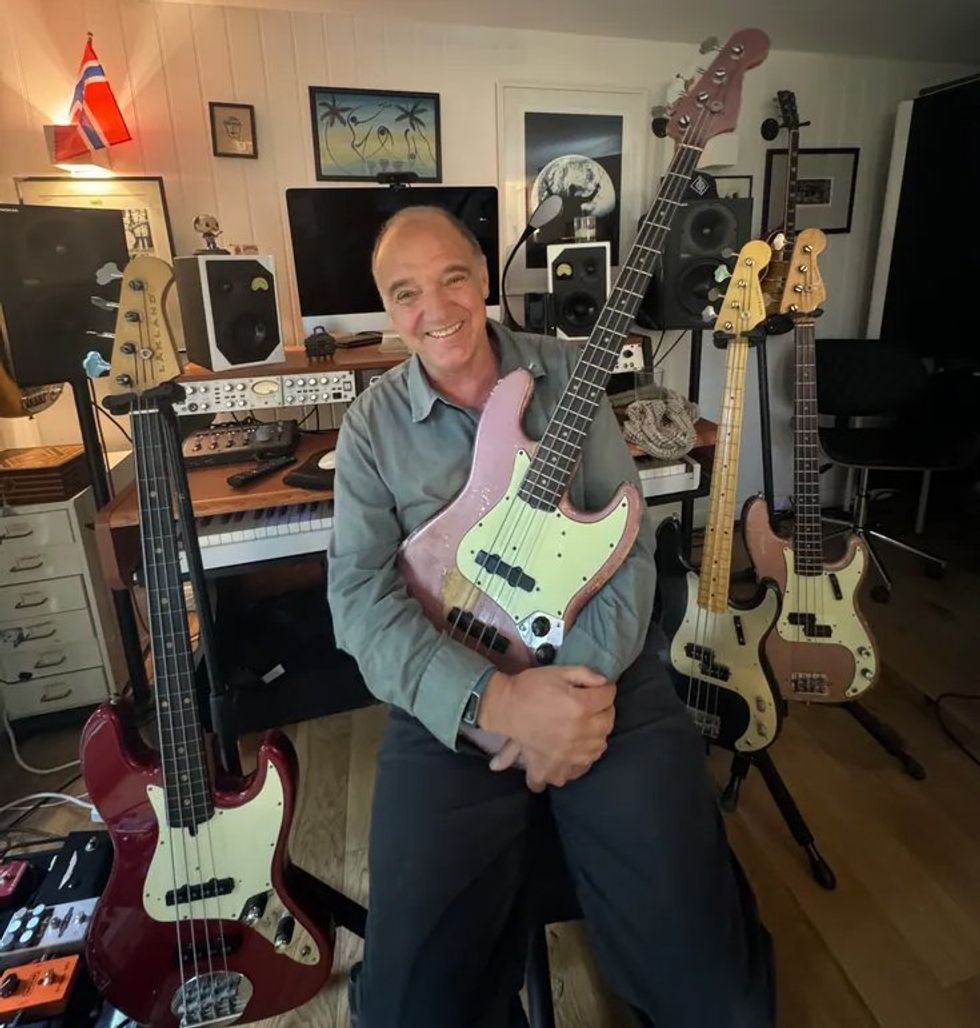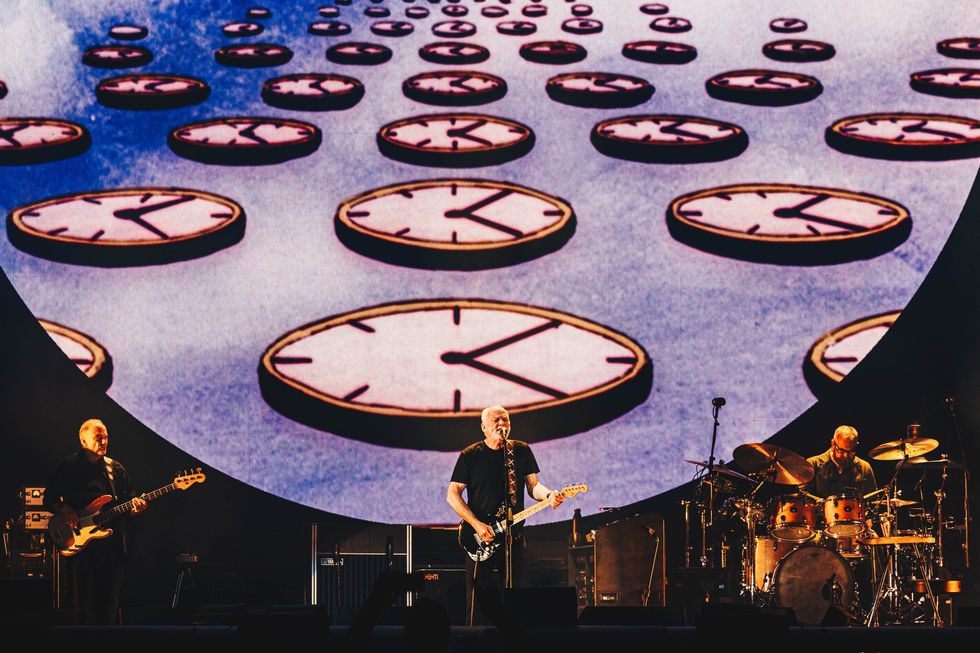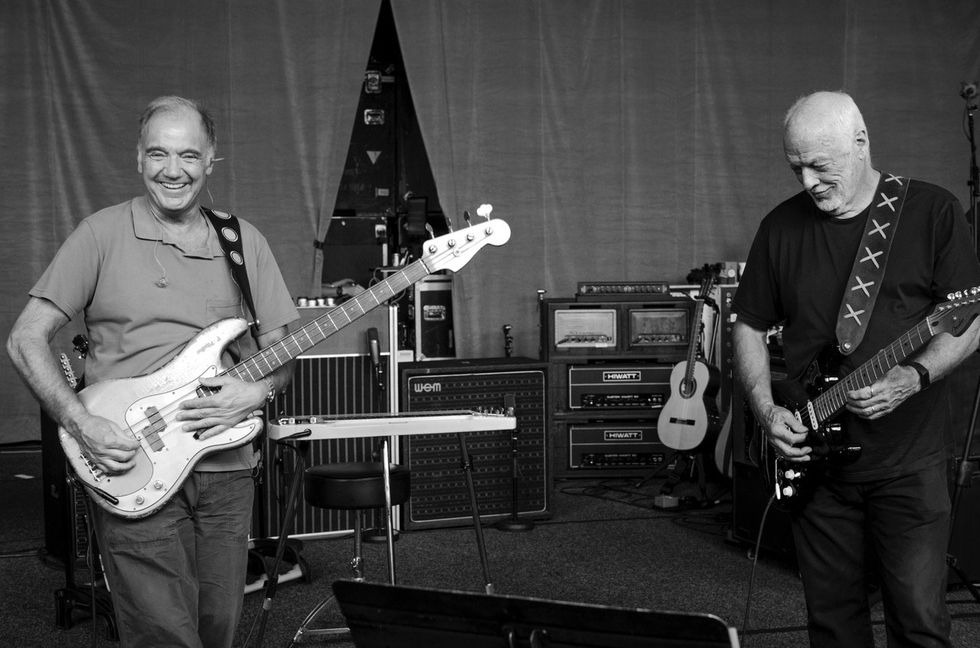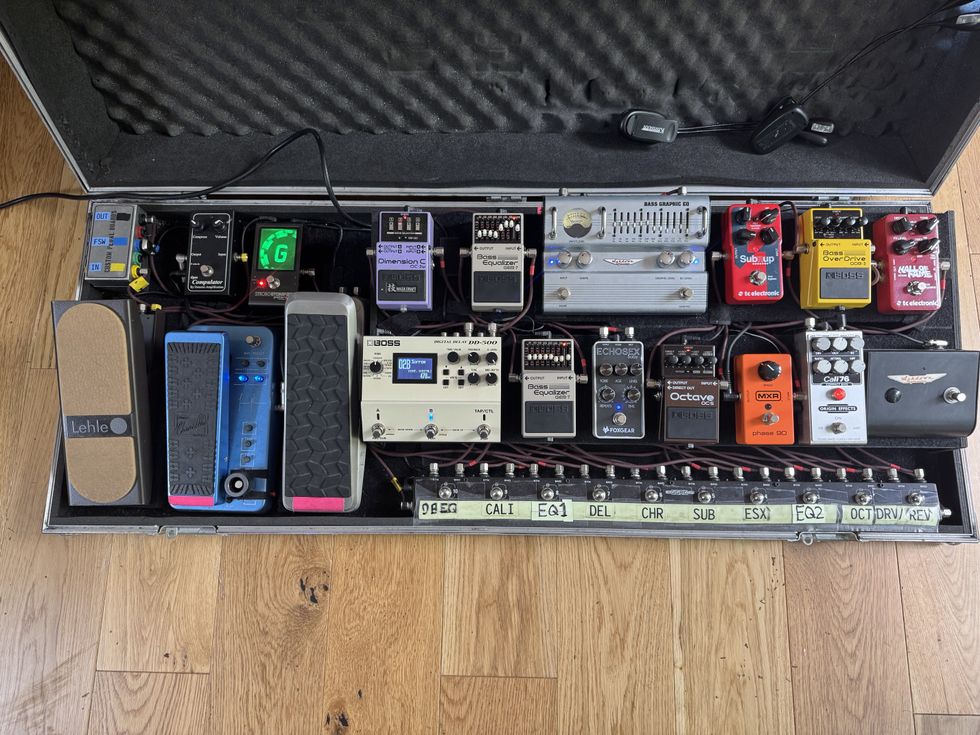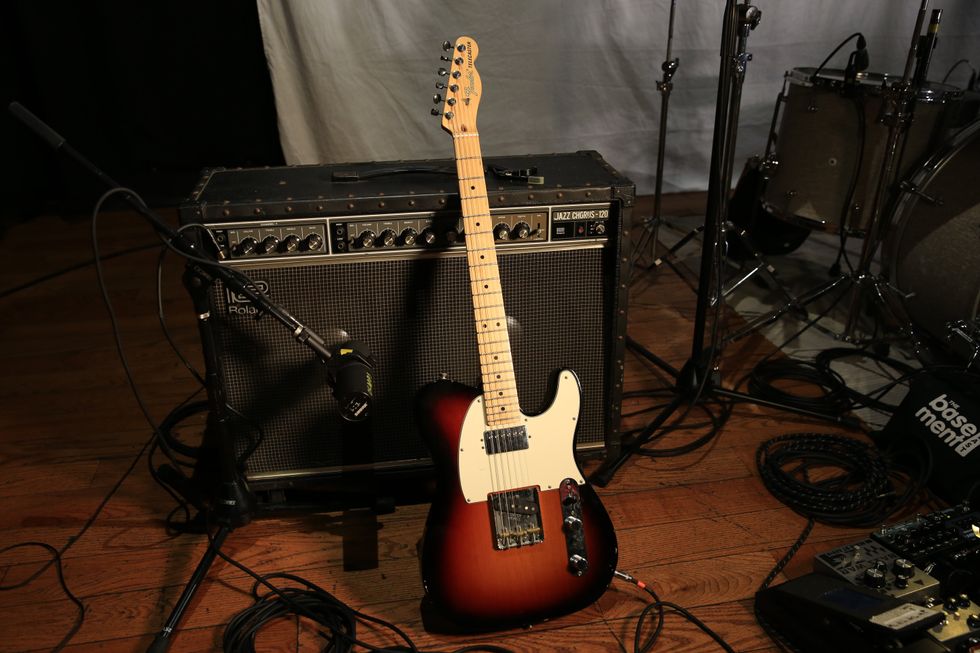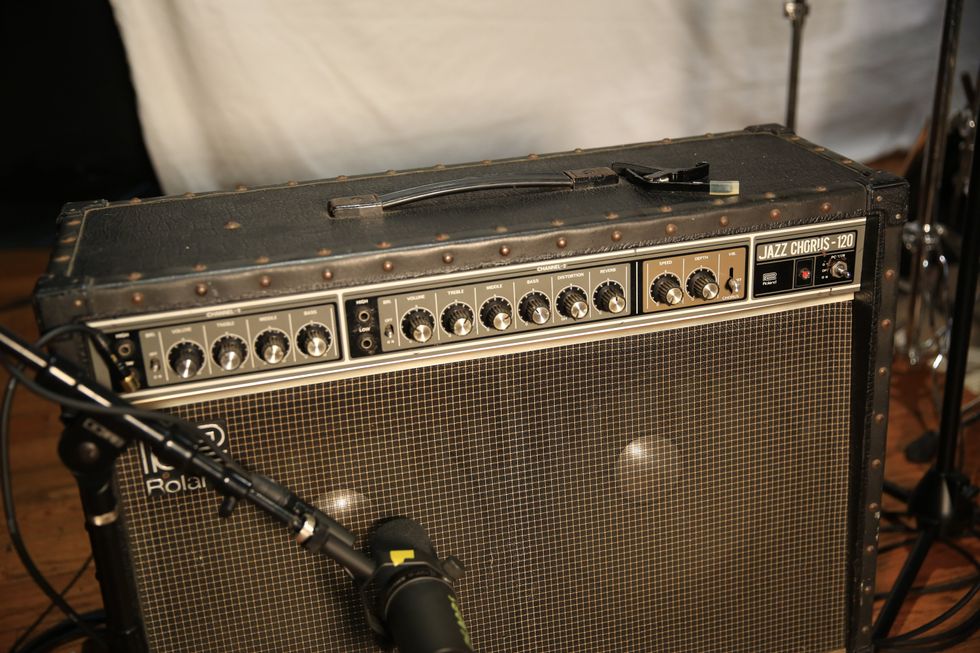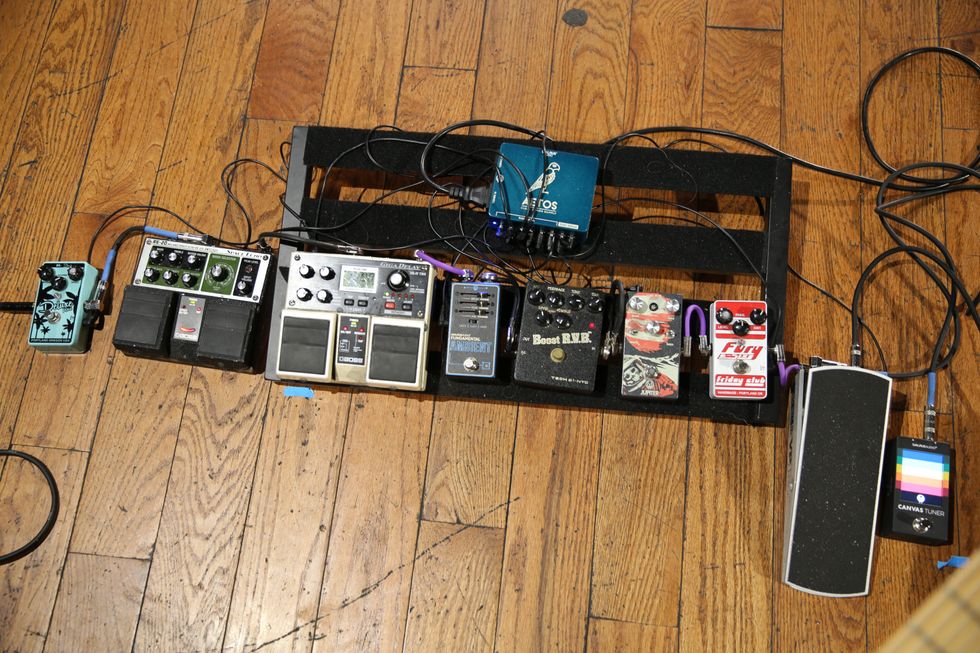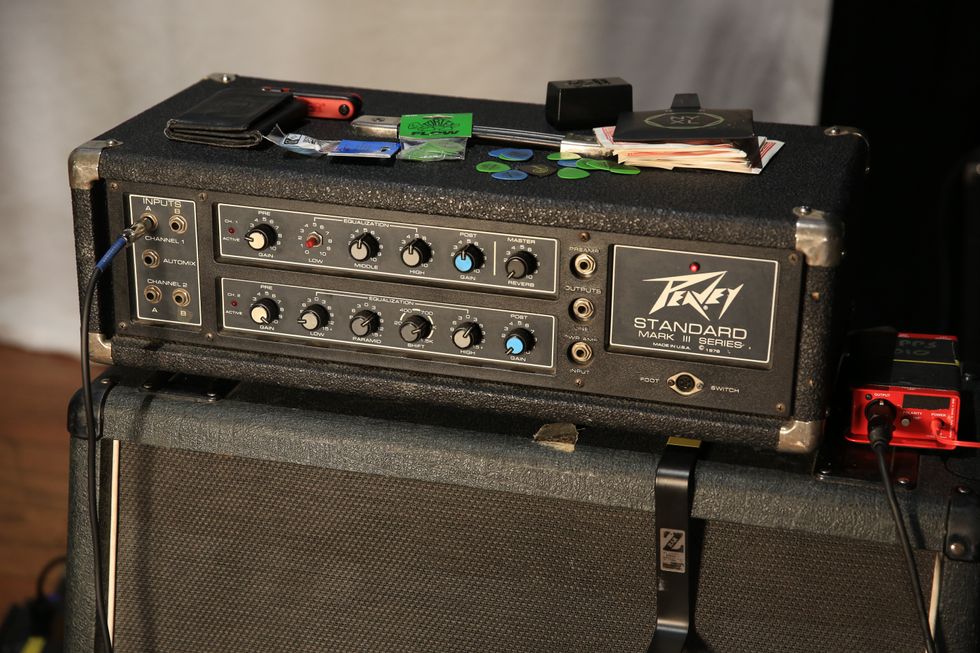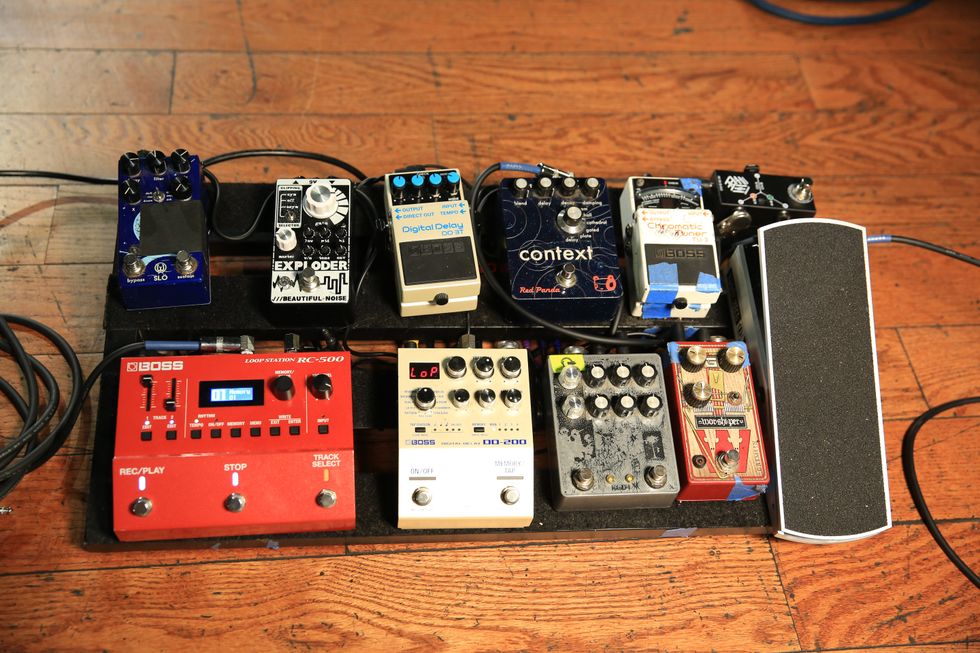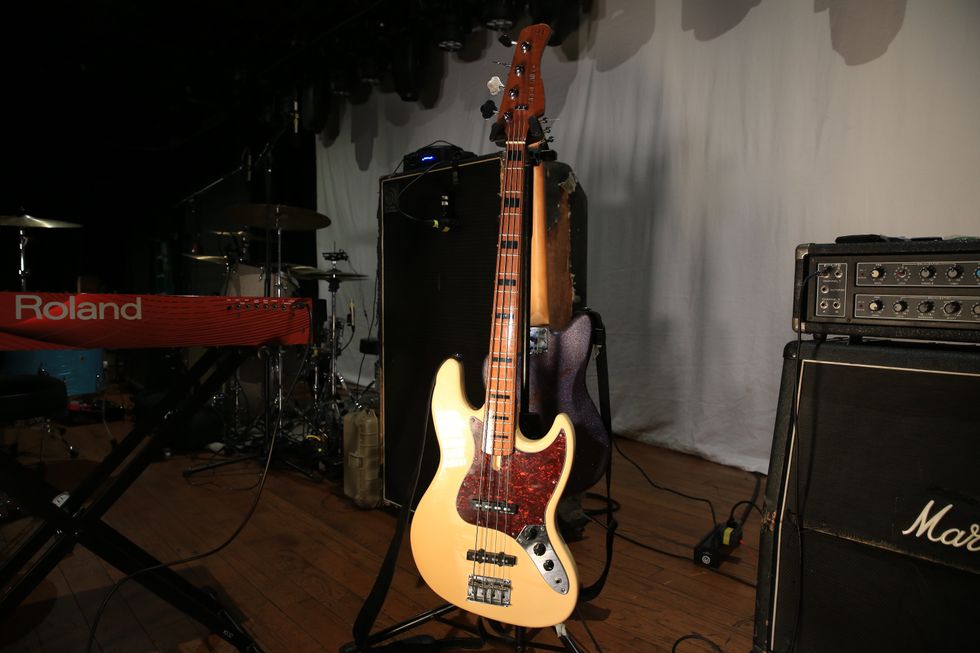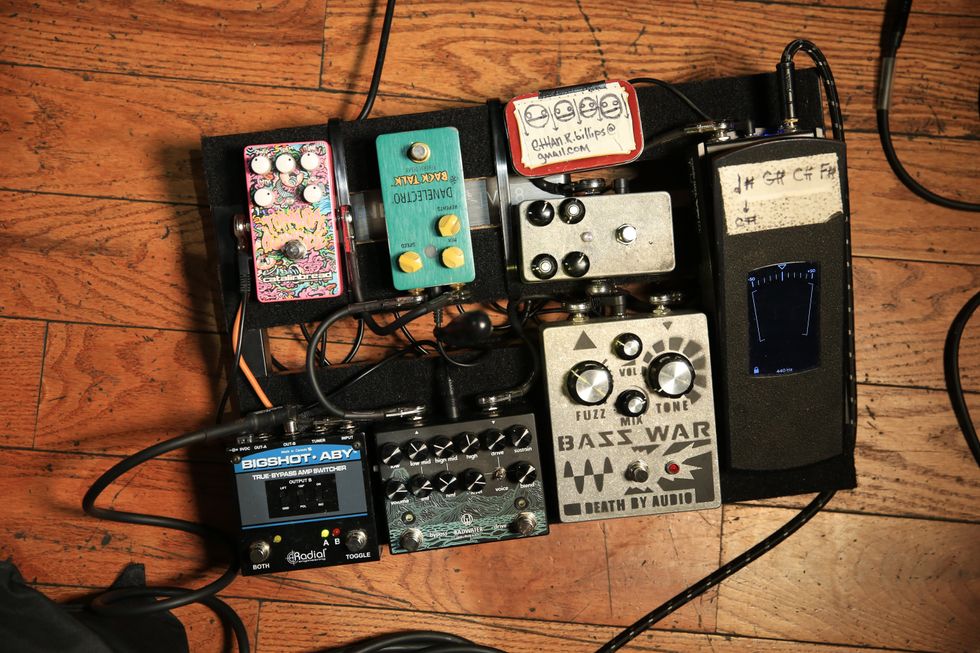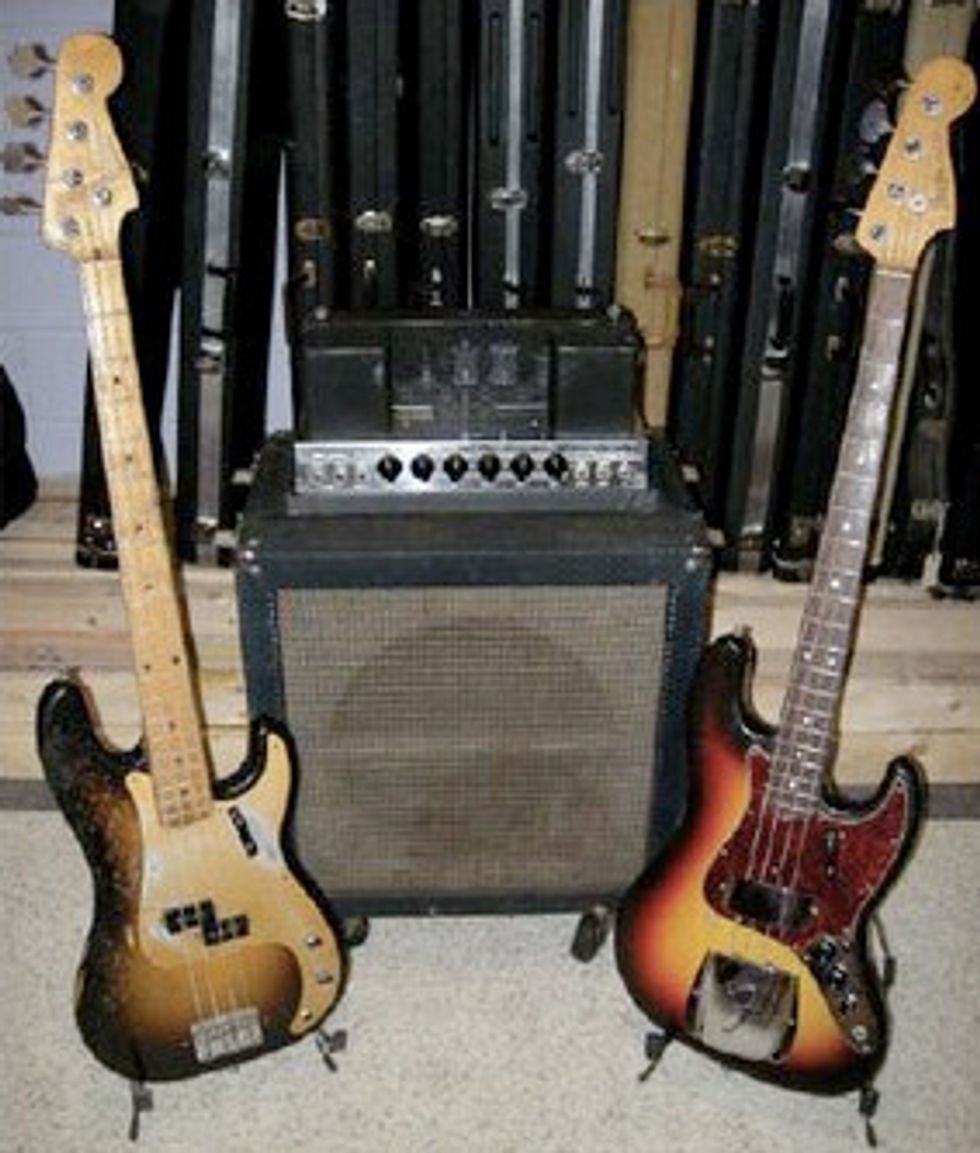 My personal '65 B-15, '58 P-Bass and '65 J-Bass |
I view the vintage bass amp world in three distinct eras: the early years, from the early ‘50s to about 1968; the SVT era, from 1969 to about 1982; and the early to late ‘80s.
The truth is, forty to fifty years ago, you lived with amps that were always being serviced or repaired. Ninety-five percent of the time in a live situation, you were stepped on by your guitar player with a Marshall, a V4 or a Twin Reverb. As far as tone, some of early amps sounded unreal, and quite frankly a lot of them stunk. Below are some of the benchmarks of this era. Are vintage amps practical for today’s bass player? Let’s explore.
The Early Years
How many of you have ever opened the control cavity of an early, untouched Stack Knob Jazz Bass? Or maybe an early Rickenbacker? Have you seen the caps in the cavity that have no impact on the tone control? They are there for one reason and one reason only: to attenuate output. The reason is the early bass amps would distort from the high output of a then-new bass. That’s not much praise for a front end of an amp designed by the manufacturer to match their own basses. The earliest amps up until the very early ‘60s were primarily made by Gibson and Fender. The most infamous amp of this era was definitely the tweed Fender Bassman. Many a Bassman rocked a high school gymnasium back in the day. The reason these amps cost a fortune today has nothing to do with bass prowess; these amps became top-tier collectibles for guitarists. The tweed Bassman is an unreal guitar amp! You will not find one for under $5000.
The next major stride in bass amps came from Ampeg, with their M-15 and B-15 models. The M-15 not of the Portoflex design pre-dates the B-15. The B-15 introduced the flip top for Ampeg and (more importantly) may be the most pure sounding bass amp ever manufactured. Since 1976, I have always had a B-15 in my arsenal. For a passive 4-string bass, this amp records better than any other amp ever manufactured. It is also in my top two amps for upright use, and it is the one I pick for a low-volume casual gig. Every B-15 has a short retail floor life. The M-15 has tone similar to the B-15 and can sometimes be found for a lot less money, because folks have just not caught onto them.
The other major amp from this era was the second series Fender Bassman. This amp was a separate head and cabinet. The small-box cabinet featured a 2x12” configuration. Through the different small-box eras, the heads were similar but not identical. My favorite Bassman of any era is the black tolex, black stencil models. The tone of these amps is not quite as round and buttery as the B-15, but they have a more midrange tone that really works extremely well with a ‘60s Precision or Jazz Bass. Like its predecessor, most of these amps end up in hands of guitar players. For a studio situation, every bass player needs to own one of these amps. Unless you’re gigging in a low-volume situation or your entire backline is comparable and balanced, you stand a chance of getting buried. Tubes may take a little while to find, especially the weird ones in the Ampeg, but you can find them.
Here’s a rule that applies to any vintage amp: the day you buy it, get it serviced. You will want the utmost reliability on your gig and safety in your home. My personal two cents: have the two-prong plug changed to a three-prong, unless you have a minty specimen that will not be used in a live situation or in conjunction with another plugged-in appliance. Modern bass users, this I will guarantee you—your modern preamped bass or your 5-string will cause physical damage to this genre of amplifier.
The Lowdown Wrap-up
Next month the big boys: SVTs, 360/370s, Majors, etc. will be explored. For safety’s sake, never explore the inner workings of your amp unless you’re a qualified professional. There is stuff in there that will kill you. Until next time, drop the gig bag, bring the cannolis!
Kevin Borden
Kevin Borden has been a bass player since 1975 and is currently the principle and co-owner, with “Dr.” Ben Sopranzetti, of Kebo’s Bass Works: kebosbassworks.com. He can be reached at: Kebobass@yahoo.com.


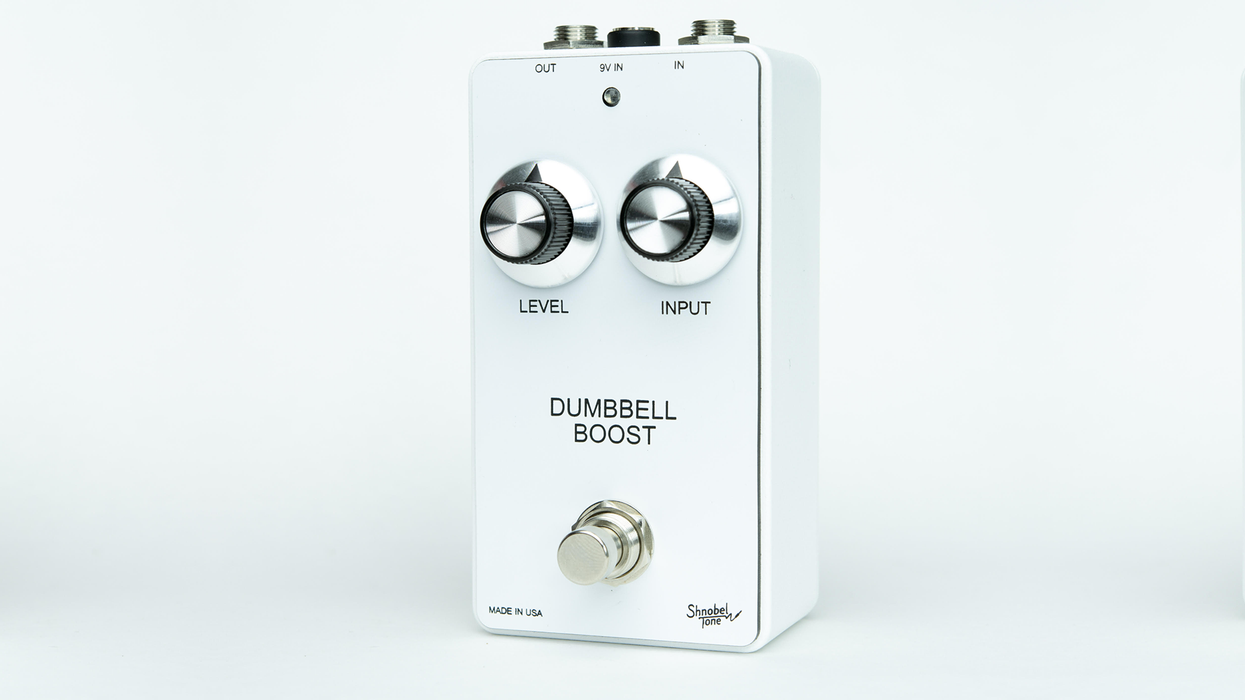

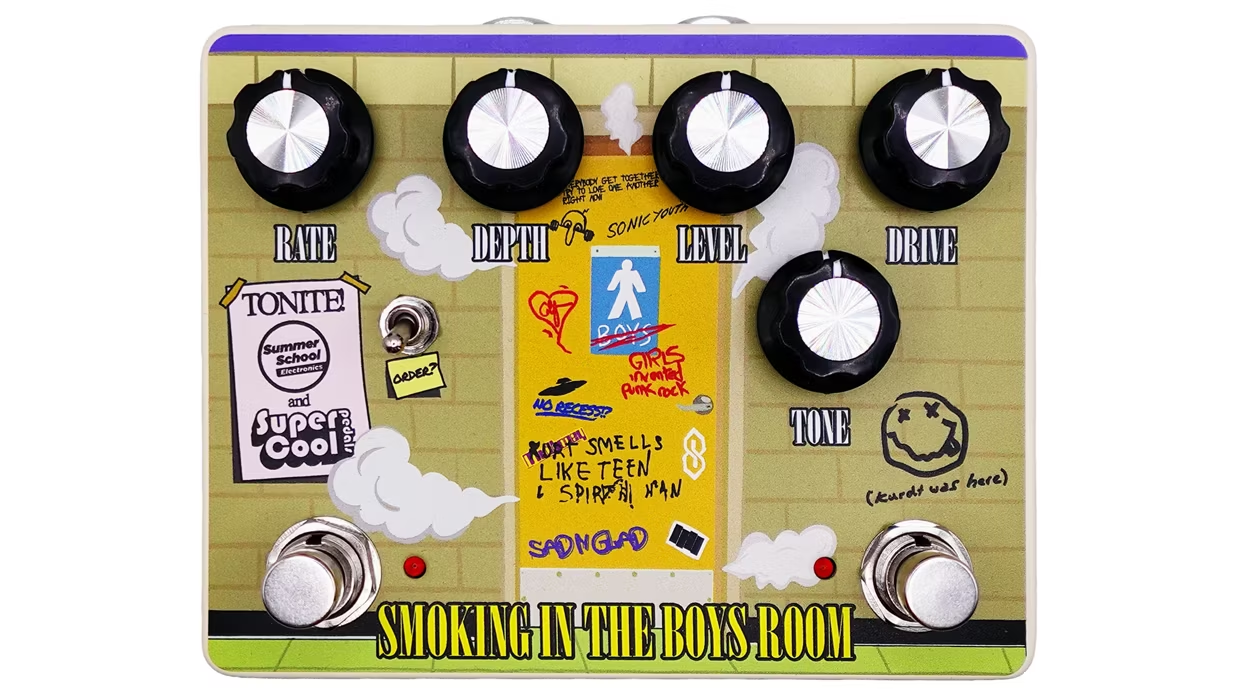

![Rig Rundown: AFI [2025]](https://www.premierguitar.com/media-library/youtube.jpg?id=62064741&width=1245&height=700&quality=70&coordinates=0%2C0%2C0%2C0)












 Shop Scott's Rig
Shop Scott's Rig
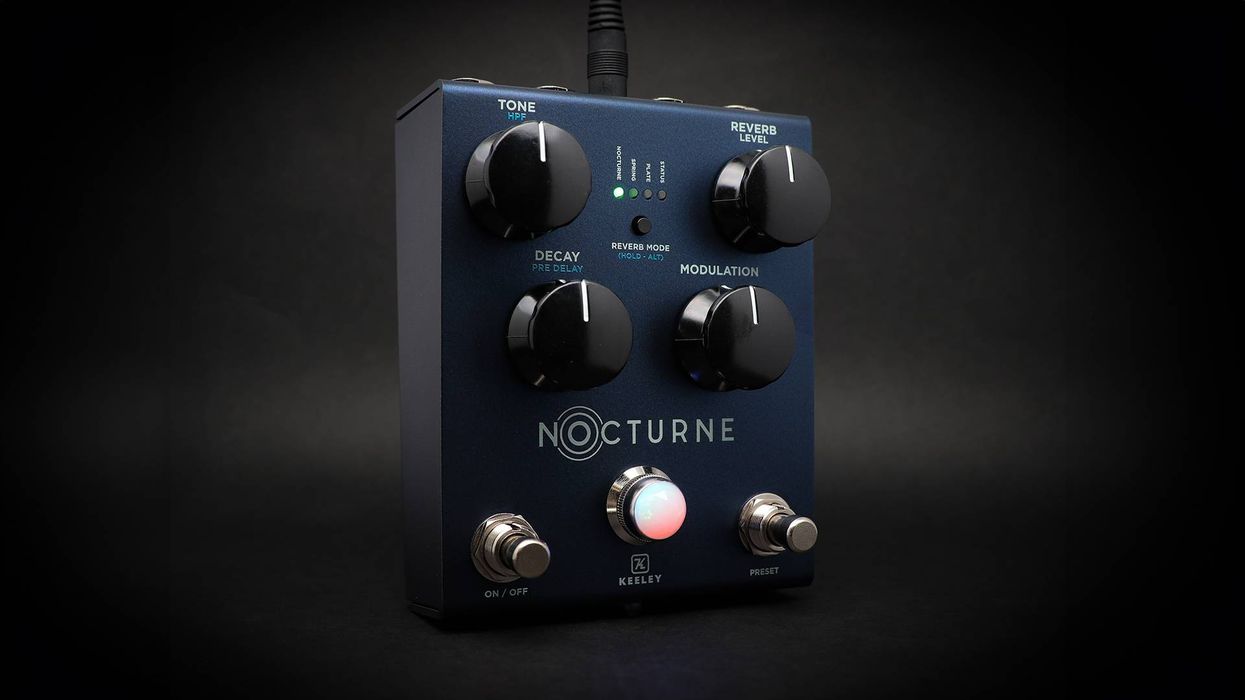

![Rig Rundown: Russian Circles’ Mike Sullivan [2025]](https://www.premierguitar.com/media-library/youtube.jpg?id=62303631&width=1245&height=700&quality=70&coordinates=0%2C0%2C0%2C0)
